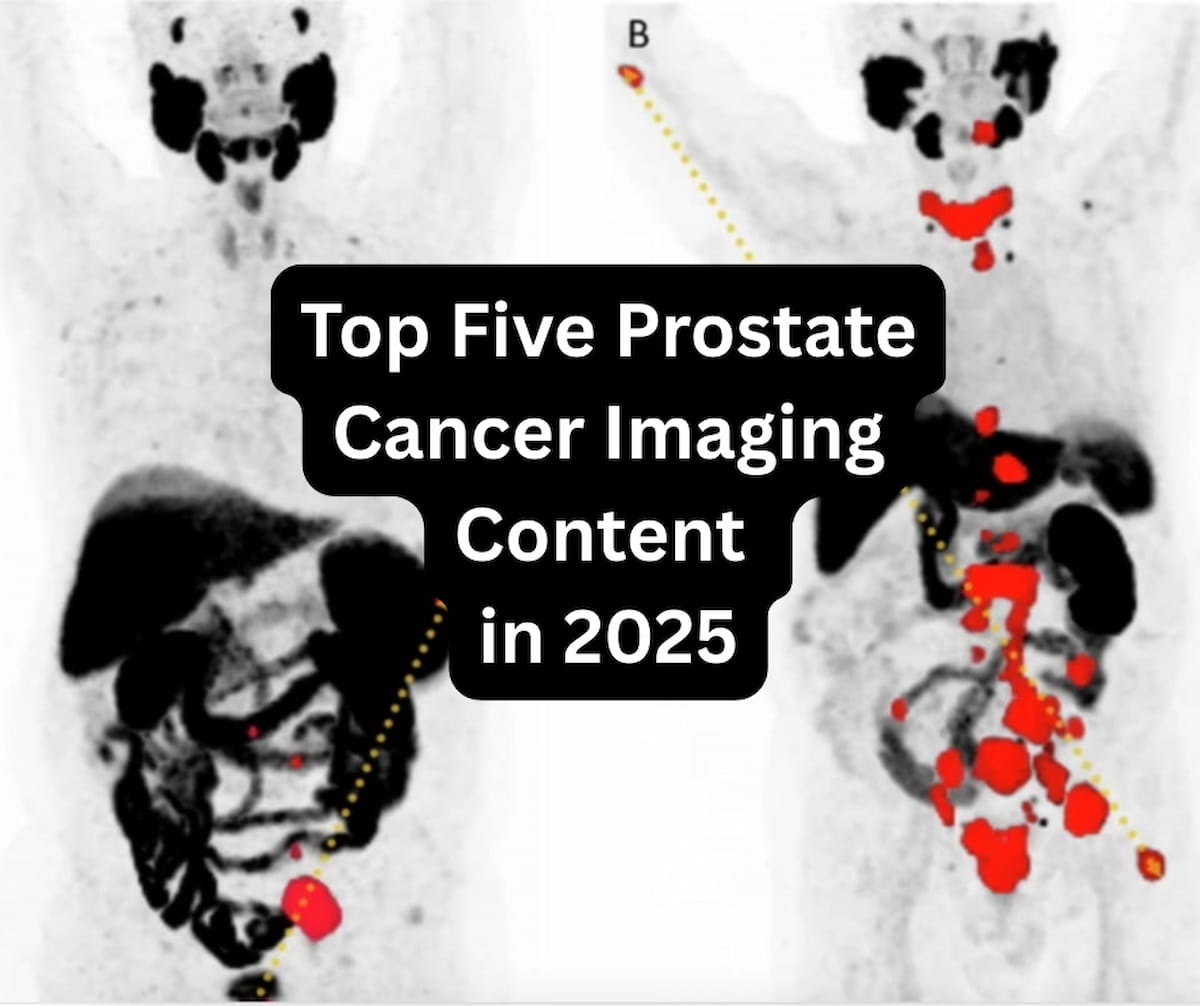
Disease Spotlight: Prostate Cancer
Latest News

IR Update: FDA Clears Emerging Prostate Tissue Ablation System for Intermediate Risk PCa
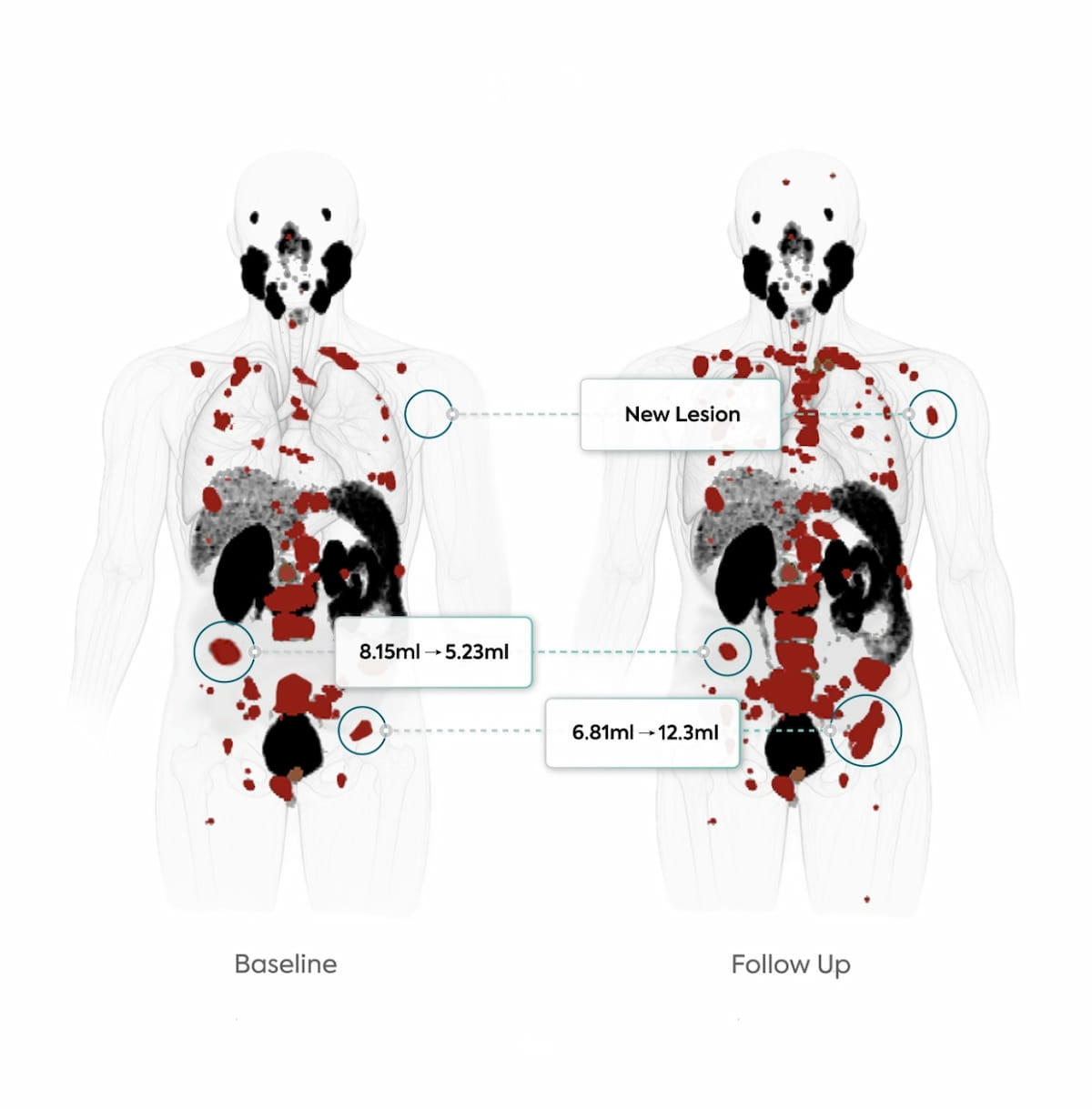
New PSMA PET/CT-Based AI Tool May Facilitate Monitoring of Treatment Response in Patients with PCa
Latest Videos

Podcasts
More News

Researchers found no statistically significant differences between bpMRI and mpMRI evaluations of patients with PI-RADS 3 presentations, according to a new multi-reader study.
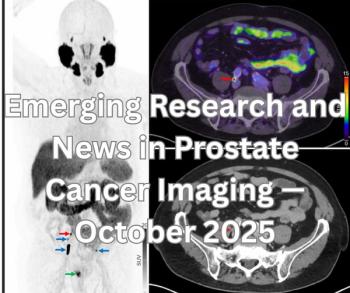
Catch up on the most-well viewed prostate cancer imaging content in October 2025.

Pluvicto in combination with the standard of care led to a 28 percent reduction in the risk of radiographic progression or death in patients with metastatic hormone-sensitive prostate cancer (mHSPC), according to results from the phase III PSMAddition trial presented at the European Society for Medical Oncology (ESMO) conference.
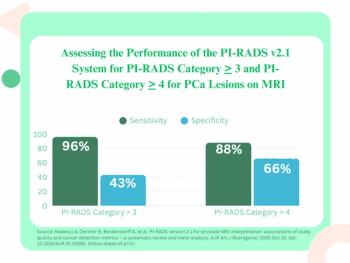
While a new meta-analysis of the PI-RADS v2.1 criteria showed 96 percent and 88 percent sensitivity rates for PI-RADS category > 3 and PI-RADS category > 4 assessments respectively, researchers noted a high risk of bias in 29 percent of the reviewed studies.
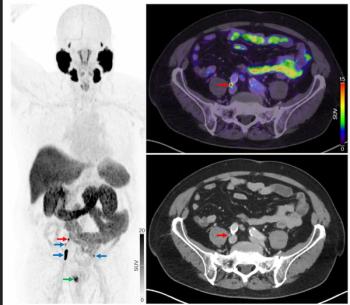
In the 160-patient study comparing 18F-PSMA 1007 PET/CT and 18F-NaF PET/CT, the use of 18F-PSMA PET/CT led to 38 patients being restaged as having more advanced prostate cancer.
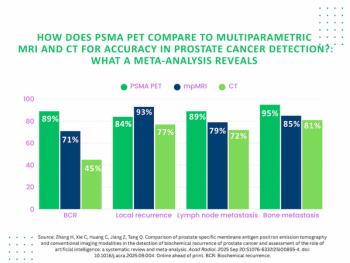
PSMA PET offered 18 percent higher accuracy for detecting biochemical recurrence of PCa in contrast to mpMRI, according to findings from a 67-study meta-analysis.

Abbreviated biparametric MRI demonstrated nearly equivalent detection rates for clinically significant and clinically insignificant prostate cancer as multiparametric MRI, according to research involving 22 centers in 12 countries.
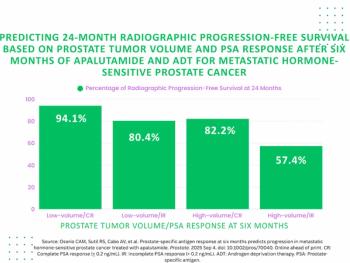
New research shows that over 94 percent of patients who had a PSA level of < 0.2 ng/mL and low-volume disease assessment six months after initiation of apalutamide and androgen deprivation therapy (ADT) for metastatic hormone-sensitive prostate cancer had radiographic progression-free survival at 24 months.
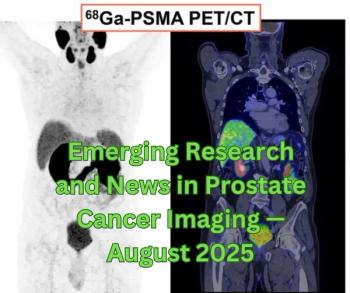
Catch up on the most-well viewed prostate imaging content in August 2025.
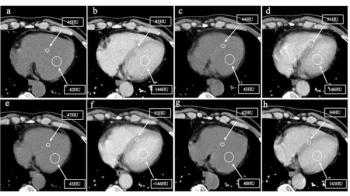
Nine months after initiation of androgen deprivation therapy (ADT), prostate cancer patients with higher myocardial extracellular volume (ECV) — derived from chest contrast-enhanced CT — had over a fourfold higher risk for major adverse cardiovascular events (MACEs), according to new research.
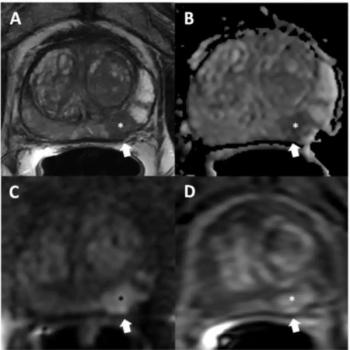
In a new review of MRI-based scoring systems for T-staging of prostate cancer, researchers discuss key literature findings and principles in evaluating the extent of prostate cancer (PCa) lesions, and whether a focus on specificity could enhance the staging of PCa.

PSMA PET/CT Facilitates Better Long-Term Survival Rates After Salvage Radiotherapy for Recurrent PCa
Patient with biochemical recurrence of prostate cancer who had PSMA PET/CT prior to salvage radiotherapy had better survival rates at one, two and five years, according to newly published research.
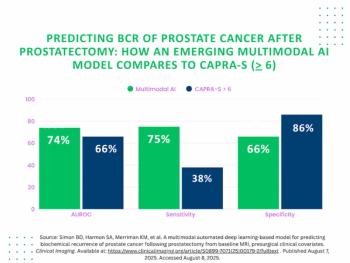
A deep learning multimodal model that incorporates MRI features offered nearly double the sensitivity for predicting post-prostatectomy biochemical recurrence of prostate cancer in comparison to the traditional CAPRA-S scoring system.
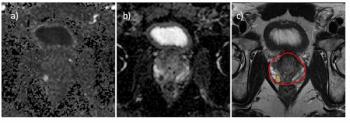
Offering an 87 percent sensitivity for clinically significant prostate cancer (csPCa), the deep learning model demonstrated an 86 percent AUC for predicting > PI-RADS 3 lesions on prostate MRI.

An analysis of over 749,000 Medicare beneficiaries diagnosed with prostate cancer over a five-year period found that Black men were 13 percent less likely to receive PET imaging and 16 percent less likely to receive MRI in comparison to White men.
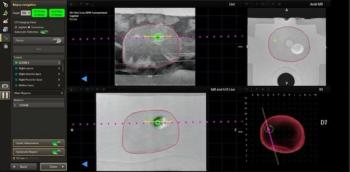
Advanced annotation with the updated UroNav MRI/ultrasound fusion platform may facilitate enhanced precision and efficiency with focal therapies for prostate cancer.
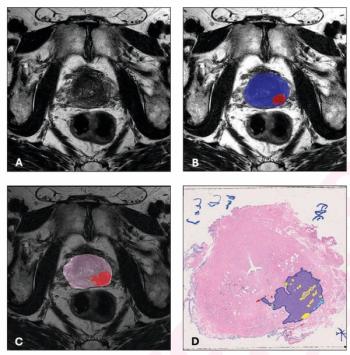
The use of adjunctive bpMRI-based AI led to 10 percent and greater increases in lesion-level PPV for csPCa and PCa with a threshold of PI-RADS > 3.

Emerging research revealed significantly enhanced sensitivity for prostate cancer detection with adjunctive and stand-alone use of AI.

Currently in a phase I trial for solid prostate cancer tumors, the deoxycytidine kinase inhibitor TRE-515 garnered the fast track designation for possible combination use with Pluvicto in treating mCRPC.

The HCPCS level II code A9616 goes into effect on October 1 for the PSMA PET preparation kit, which received FDA approval in March.

The additional indication for the preparation kit of gallium Ga-68 gozetotide may facilitate earlier use of PSMA-targeted treatment for men with prostate cancer.

The use of adjunctive AI in biparametric prostate MRI exams led to 3.3 percent and 3.4 percent increases in the AUC and specificity, respectively, for clinically significant prostate cancer (csPCa) in a 360-person cohort drawn from 53 facilities.

Offering an extended shelf life, the FDA-approved Gozellix, a preparation kit for gallium-68 (68Ga) gozetotide injection, is indicated for use in PSMA PET imaging of prostate cancer patients with suspected recurrence or metastasis.

Emerging research showed that AI-generated ADC mapping from MRI led to significant increases in accuracy, PPV and specificity in comparison to conventional ADC mapping while achieving a 93 percent sensitivity for PCa.
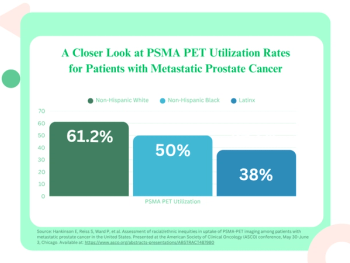
Latinx patients with metastatic prostate cancer were 63 percent less likely than non-Hispanic White patients to have PSMA PET scans, according to a study of 550 patients presented at the American Society of Clinical Oncology (ASCO) conference.

